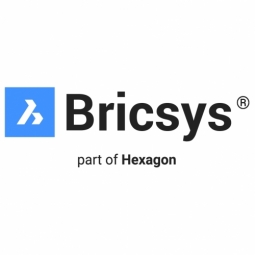适用行业
- 水泥
- 建筑与基础设施
用例
- 施工管理
- 施工现场监控
关于客户
STRABAG SE 是奥地利首屈一指的建筑施工和工程组织,拥有 120 多年的经验。他们的中央技术部门是 STRABAG SE 的一个员工单位,通过提供施工管理和建筑物理方面的创新解决方案,为整个施工过程中的运营部门提供支持。团队产品概念和管理 CAD 支持所有使用 DWG 图纸的 STRABAG-Group 用户。该公司现已选择 BricsCAD 作为其值得信赖的 CAD 软件,并拥有 150 多个网络许可证。
挑战
STRABAG SE 是奥地利首屈一指的建筑施工和工程组织,正在寻找一种经济高效的替代方案来替代其现有的 CAD 软件。该公司需要一个解决方案,使他们能够继续以原生 .dwg 格式工作并完全拥有许可证。 STRABAG SE 的中央技术部门为整个施工过程中的运营部门提供支持,其任务是寻找施工管理和建筑物理方面的创新解决方案。产品概念和管理 CAD 团队支持所有使用 DWG 图纸的 STRABAG-Group 用户,该团队也参与了新 CAD 软件的搜索。
解决方案
STRABAG SE 决定改用 BricsCAD,这是其现有 CAD 软件的经济高效的替代方案。该公司在向国内外所有用户提供 BricsCAD 之前对其进行了广泛的测试。他们向用户介绍了 BricsCAD,并让他们可以选择使用 BricsCAD,同时仍可以使用其他软件。如今,当用户需要 CAD 软件时,STRABAG SE 推荐 BricsCAD。 STRABAG SE 的 CAD 团队密切关注软件市场,定期推出新产品,为当前安装的软件准备更新,并替换过时的软件。 STRABAG SE 还利用 Bricsys 的在线帮助中心和支持台,其中包括 BricsCAD 上的文章和教程,使用户能够提交问题、报告问题以及为 Bricsys 社区做出贡献。
运营影响
数量效益

Case Study missing?
Start adding your own!
Register with your work email and create a new case study profile for your business.
相关案例.

Case Study
System 800xA at Indian Cement Plants
Chettinad Cement recognized that further efficiencies could be achieved in its cement manufacturing process. It looked to investing in comprehensive operational and control technologies to manage and derive productivity and energy efficiency gains from the assets on Line 2, their second plant in India.

Case Study
IoT System for Tunnel Construction
The Zenitaka Corporation ('Zenitaka') has two major business areas: its architectural business focuses on structures such as government buildings, office buildings, and commercial facilities, while its civil engineering business is targeted at structures such as tunnels, bridges and dams. Within these areas, there presented two issues that have always persisted in regard to the construction of mountain tunnels. These issues are 'improving safety" and "reducing energy consumption". Mountain tunnels construction requires a massive amount of electricity. This is because there are many kinds of electrical equipment being used day and night, including construction machinery, construction lighting, and ventilating fan. Despite this, the amount of power consumption is generally not tightly managed. In many cases, the exact amount of power consumption is only ascertained when the bill from the power company becomes available. Sometimes, corporations install demand-monitoring equipment to help curb the maximum power demanded. However, even in these cases, the devices only allow the total volume of power consumption to be ascertained, or they may issue warnings to prevent the contracted volume of power from being exceeded. In order to tackle the issue of reducing power consumption, it was first necessary to obtain an accurate breakdown of how much power was being used in each particular area. In other words, we needed to be able to visualize the amount of power being consumed. Safety, was also not being managed very rigorously. Even now, tunnel construction sites often use a 'name label' system for managing entry into the work site. Specifically, red labels with white reverse sides that bear the workers' names on both sides are displayed at the tunnel work site entrance. The workers themselves then flip the name label to the appropriate side when entering or exiting from the work site to indicate whether or not they are working inside the tunnel at any given time. If a worker forgets to flip his or her name label when entering or exiting from the tunnel, management cannot be performed effectively. In order to tackle the challenges mentioned above, Zenitaka decided to build a system that could improve the safety of tunnel construction as well as reduce the amount of power consumed. In other words, this new system would facilitate a clear picture of which workers were working in each location at the mountain tunnel construction site, as well as which processes were being carried out at those respective locations at any given time. The system would maintain the safety of all workers while also carefully controlling the electrical equipment to reduce unnecessary power consumption. Having decided on the concept, our next concern was whether there existed any kind of robust hardware that would not break down at the construction work site, that could move freely in response to changes in the working environment, and that could accurately detect workers and vehicles using radio frequency identification (RFID). Given that this system would involve many components that were new to Zenitaka, we decided to enlist the cooperation of E.I.Sol Co., Ltd. ('E.I.Sol') as our joint development partner, as they had provided us with a highly practical proposal.

Case Study
Splunk Partnership Ties Together Big Data & IoT Services
Splunk was faced with the need to meet emerging customer demands for interfacing IoT projects to its suite of services. The company required an IoT partner that would be able to easily and quickly integrate with its Splunk Enterprise platform, rather than allocating development resources and time to building out an IoT interface and application platform.

Case Study
Bridge monitoring in Hamburg Port
Kattwyk Bridge is used for both rail and road transport, and it has played an important role in the Port of Hamburg since 1973. However, the increasing pressure from traffic requires a monitoring solution. The goal of the project is to assess in real-time the bridge's status and dynamic responses to traffic and lift processes.

Case Study
Bellas Landscaping
Leading landscaping firm serving central Illinois streamlines operations with Samsara’s real-time fleet tracking solution: • 30+ vehicle fleet includes International Terrastar dump trucks and flatbeds, medium- and light-duty pickups from Ford and Chevrolet. Winter fleet includes of snow plows and salters.








